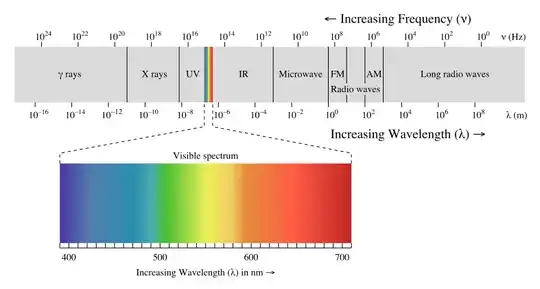Yes, X-ray, UV, and even radio waves are made of photons.
The difference is the Energy (or equivalently, the wavelength).
See the picture of the Electromagnetic spectrum . The different nomination comes from the time of the discovery. Your eyes can see the visible part. the radio waves can be observed with antennas, etc. The only difference is the way we observe it. But they are all the same (photons).
Here is a scale of the different wavelength for electromagnetic waves:

The Energy reads $E=mc^2$ for massive particles, which a photon is not. The good relation is:
$$ E=pc = \hbar c k = h \nu $$
You have to use the complete Einstein relation:
$$ E = \sqrt{p^2c^2 + m^2c^4}$$
And the energy is always finite.
